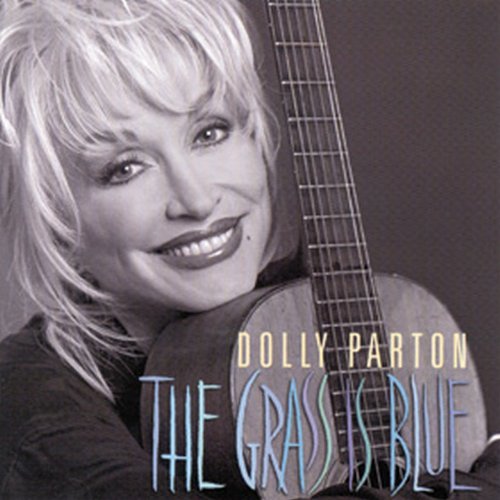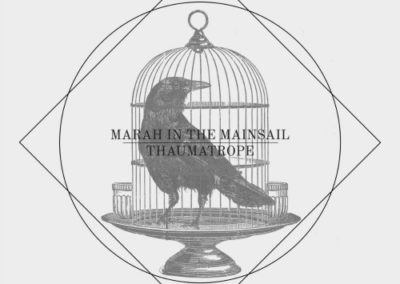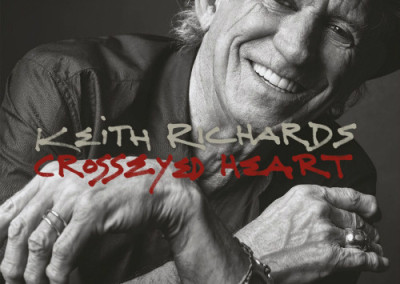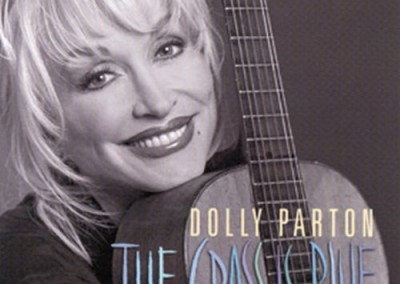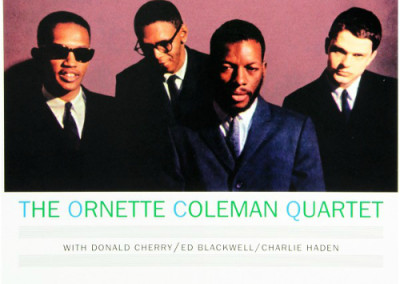
Robert Morin
Contributor
Associated Equipment:
Audiotechnica AT-LP120-USB with stock cartridge
Thorens TD165 with Denon DL-110 cartridge
Denon DP-51S with Denon DL-103R cartridge
Lounge Audio LCRmkIII Phonostage Preamp
Lounge Audio Copla Step-Up Preamp
Kenwood Stereo Integrated Amp KA-54, don’t laugh!
Alesis Monitor 1 with modified cross over
Preamp interconnects are all Lounge Phono Cables
Speaker wire (don t laugh again!) regular zip cord from the electronic shop 375 gram
Lounge Audio record clamp 1⁄4” Y phone cables AKG K-701 Headphones
Intro
If you were around in the United States in the 80s you could not avoid being bombarded by Dolly Parton’s country- pop music sell outs like 9 to 5. Back then, she would seem an unlikely candidate to push her pop music clout toward a bluegrass music project. Her voice was wonderful and she used her image to propel herself to the top of the charts as a country-pop hybrid, rhinestone queen. In 1999, while most of us were worried about Y2K, Dolly’s career had reached an apex of fame and money. She was inducted into the Country Music Hall of Fame and at the same time she saw fit to record her first grass root bluegrass album “The Grass is Blue”. I remember when this album was released in 1999 and it was lauded as a great down-home effort by Dolly to return to her musical roots.
My rediscovery of this came from attending an Emi Sunshine concert at Buck Owens Crystal Palace in Bakersfield CA and having my wife ask me if there were any vinyl LP’s released that were something approaching what we had heard live by the wonder kid country singer Emi. I thought to look up Dolly’s bluegrass release and, lo and behold, Doug Sax had mastered a vinyl cut that was just released this year for Record Store Day. Bingo!
Dolly was one of the few country performers who had the financial means and fame to do a bluegrass album and have it pushed straight up into the forefront of the pop music scene. At this time, studio recording had fully embraced digital multitrack technology and almost totally forsaken the analog 24 standard that got us through the 70s and 80s. Most of the skilled studio engineers at this time were integrating analog front end recording technology with digital recording.
Gary Paczosa was developing his bluegrass recording chops and had created this album using single tracked instruments with stereo mic set ups. His approach on mic set up is available at Mix magazine and, in general, he uses vintage Newman mics hooked up to modern tube or solid state mic preamps with modern solid state studio compressors. Once in a while, he will use a ribbon mic or pair up a vintage mic with a vintage mic preamp. So, what we have here is an LP that was recorded in a Nashville power house studio with 21st century tracking abilities and a focus of the best analog vintage microphones and mic preamps available at the time.
Up until just this year this album was only available as a standard CD. Doug Sax mastered the CD release in 1999 so he had the digital files. Fast forward to 2015 and he remastered this blue grass gem on to vinyl. So we now get to hear what that incredible tube cutting head amplifier that he had spent most of his life maintaining and re-engineering can do for this digital blue grass glory. Just a side note; the LP credits state “The Mastering Lab, Los Angeles, CA.” The Mastering Lab was located in Los Angeles (Hollywood) when he did the CD master, but the vinyl was cut in his facility at Ojai where he moved to in 2008. This is probably nearly the last vinyl Doug cut before passing away. Doug will always be remembered by those who admire his work and luckily Chad Kassem from Sound Acoustics took over the company.
The Grass is Blue is a collection of some classic bluegrass songs from old school performers and two tunes that Dolly wrote herself with a bluegrass tinge version of a Bill Joel song. Of course a plethora of country music greats of the time contributed performances to help fill out this album.
About the LP
The opening song, Travelin’ Prayer, starts out with a slow hymn like fiddle intro. Then the guitars come in with melodic and rhythm accompaniments that add a waltz flavor. Afterwards comes a short refrain and the full ensemble breaks in to a typical hillbilly double time rhythm. Another minute or two into the song and it is apparent that the close mic’ing of these instruments gives a very accurate representation of the band as a whole yet each instrument
retains its identity. The musicianship is impeccable with wicked timing but it is most notable that the dobro player Jerry Douglas is able to combine sliding notes and finger picking individual notes almost at the same time as he weaves in and around the rhythm section with phenomenal skill and fluidity. Dolly drops in with commanding vocals that show urgency and fortitude in spite of her approaching her mid fifties. She still holds down a solid up-tempo performance.
Throughout this album you notice a convergence of uncompromising musicianship, perfect close mic’ing of instruments and the luxury of digital domain editing that will present distilled performances that are nearly unrealistically polished. Nothing is left to chance like a vintage RCA or live jazz recording might be. There is no hint of a reverb or any aspect of the sound being slightly tubby, muted or bloated. This album represents digital perfection at its finest. I have not listened to the CD release but I do have distant memories of how it sounded over FM radio. I suspect that Doug Sax’s mastering was able to breathe a bit of life into it that is not present on the digital only format.
High Frequency – Treble
This album, as many other digitally sourced recordings, has a high frequency resonance that some might call sizzle, digititus or sibilance. It was most apparent on the high output moving coil system so I played it on a low output moving coil system where I was able to adjust the cartridge loading to 50% of the manufacturer’s recommended load value. This tamed the sibilant quality of the record quite well to where it was only noticeable at the transient peak of the vocals then quickly fading as the vocal envelope died down. Before this adjustment was made the sibilance was riding on the top of most of the vocals. Just as an aside, no tube gear is used on my playback system.
I tried this album on various turntables mainly to hear the effect of the digital sibilance. I have three turntables: a consumer DJ turntable with an average MM cartridge, a belt driven vintage turntable with a high output MC cartridge (HOMC) and a direct drive micro processor controlled automatic turntable with a low output MC cartridge (LOMC).
On the consumer turntable you get a two dimensional representation with most of the micro-transient information sloughed off. The benefit is that the sibilance is not noticeable and basically did not translate at all to the listening experience. Other than the somewhat lifeless presentation, nothing else stands out bad or good for casual listening.
On the vintage turntable with a HOMC cartridge, the sibilance was most apparent but there was also micro- transient information that the consumer turntable couldn’t translate. Sound staging was much better and the vocals and lead instruments imaged about a foot above the top of the speakers. It was good 2D but nothing more.
On the micro processor turntable with an LOMC cartridge set at factory loading the sibilance was a little less edgy than with the HOMC cartridge. The LOMC cartridge translated the sibilance almost as much but with less of its own distortion artifacts thrown into the sibilance. There was a sense of the sibilance occupying its own space in the recording producing a more natural sound. The magic happened when the LOMC cartridge was loaded at levels of about 50% of manufacturer recommended loading. Now the sibilance was contained and controlled with almost no ringing. The micro-transients came out into the room with left and right and front and back imaging and depth; the vocals were centered, and at times, could lift up a few inches above the speakers when the background singers double tracked with Dolly.
Midrange
The midrange was uncharacteristically cohesive and liquid for a digitally sourced recording and this especially augmented the dobro guitar very well. This was largely thanks to the recording engineer mic’ing each instrument with two vintage mics to capture and magnify the inherent richness of each instrument.
Bass
Bass is super clean and tight with no low frequency resonance or bloated sound. This kept the LP away from having the characteristic “one note bass” that can often plague American roots type music recordings.
Dynamics
There is nothing to write home about. The recording engineer likes to track with a compressor on the front end and you can bet that some digital compression was applied during mixdown. However, there was never a hint of pumping or heavy squashing.
Noise level
Surface noise is not as quiet as an audiophile pressing but is on the lower end of a consumer album release. A headphone was directly connected to a phono stage preamp via a 1⁄4” phone Y cable to check for surface noise. This is the most direct way to have the surface and tonearm noise kick you in the face. After you listen to the lead grooves on a few different pressings the relative levels of surface noise become very apparent.
Vinyl quality
This is not a 180 gram pressing yet the vinyl feels substantial enough. Surface appears flawlessly smooth with no mold or stamper fill problems. Slightly larger than normal dead wax space considering it is not sold as a targeted audiophile pressing. Nothing is handwritten in the dead wax. There are only stamped numbers 128932E1/A for side A and 128932E2/A for side B.
Conclusion
Many digitally sourced vinyl cuts lack much micro-transient detail. As for this release, the recording engineer knew how to capture and magnify the tonal qualities of the instruments enough that the performance could push through a digital bottleneck and with a little help from a tube mastering signal chain there was enough micro-transient information on this vinyl pressing to get, with a little work, an audiophile worthy playback.

